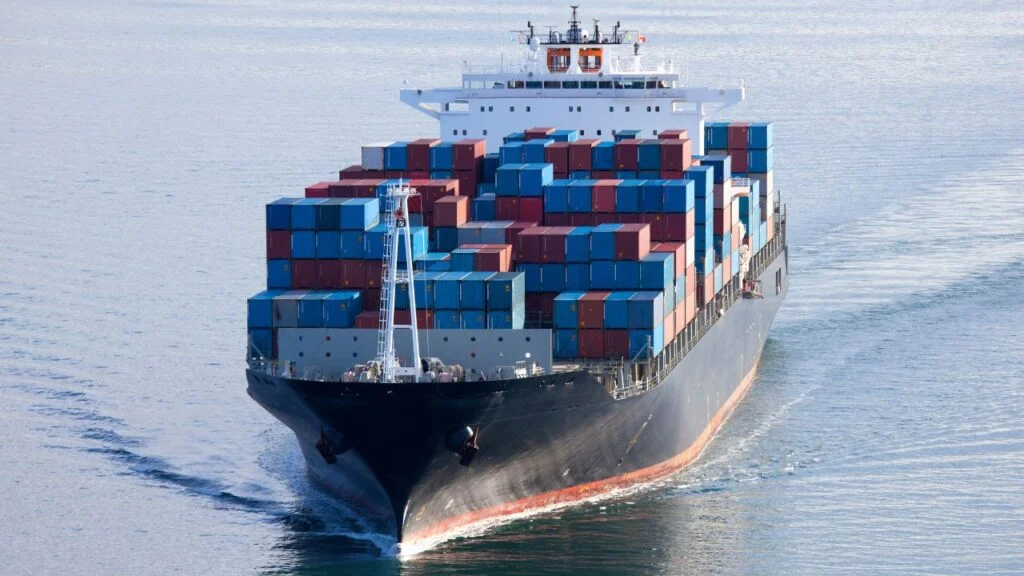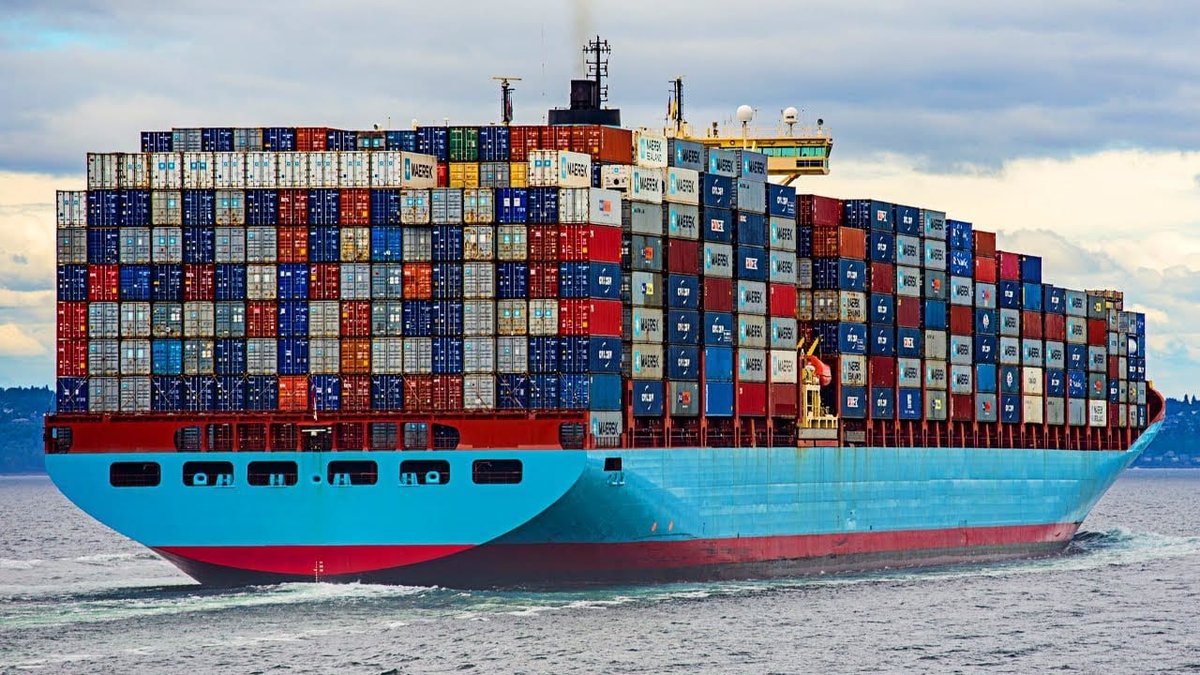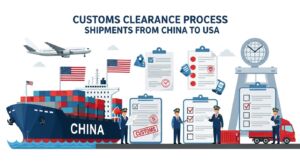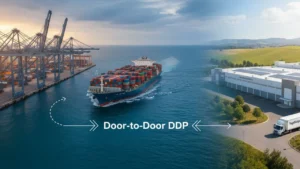Shipping heavy goods can be very stressful. Not only is it challenging to decide how to ship the goods, but it is also costly. Shipping rates for heavy load shipping, including machinery, construction equipment, tiles, metals, stones, forgings, and castings, are very high. Without enough skills and expertise, you could end up spending a lot more to ship these products. Fortunately, with this guide, you can gather enough knowledge on reducing transportation costs when handling shipping big loads.
By understanding the best practices and cost-saving strategies, you can effectively manage heavy load shipping without breaking the bank.
How to Optimize Logistics Costs When Transporting Heavy Loads
1. Ship Goods in Bulk
Transportation of goods is costly. Shipping small shipments frequently is even more expensive. Instead of shipping frequently, it is cheaper to consolidate the small shipments into one bulky shipment. This means that instead of shipping goods as Less Container Loads, you will ship them as Full Container Loads. Shipping goods in bulk will help you benefit from lower rates since the cost per unit will be lower. You will also get discounts. Consolidating cargo means that you have to wait until you have all the shipments ready so that you can ship them. Therefore, this is not suitable for time-sensitive shipments.

2. Optimize Packaging
How you package your shipment will determine how much the shipping rates will be. The packaging materials you use on a product can increase the weight and volume of the product. If you must cover the products, look for the best packaging materials. Packaging the goods is not compulsory, especially if you are shipping a Full Container Load. Also, packaging a large piece of equipment will take up a lot of material, thus increasing costs.
Packaging is not just about covering up goods. Packaging also involves how you fit the products in a container. The goal is to make use of every space available in the container. By arranging your shipment efficiently, you can ship many shipments at once. This will highly cut down on the shipping cost.

3. Consider renting rather than shipping
Before shipping heavy loads, such as construction equipment, you should evaluate whether it is worth it. Sometimes, renting the equipment locally is more economical. Weighing the options you have is very important.

4. Make timely planning and scheduling
When it comes to shipping, time is valuable. Any wasted time will cost you. Making early plans will save you from paying extra fees or fines. Some of these charges include detention and demurrage. Detention charges are made if the shipper takes more than the expected time when loading or unloading cargo. For every extra hour, the shipper pays a certain amount. Demurrage charges are made for any extra day the shipper stays with the container. The shipper is expected to use the container and return it in time. Failure to do so will result in paying demurrage. By managing time properly, you can avoid such charges.

5. Reduce the size and weight of equipment
Some pieces of equipment are too large to fit the available container sizes. In such a case, you will have to disassemble the goods to transport them as parts and not as a single piece of equipment. This will reduce the volume occupied by the shipment, resulting in lower rates. Also, if you cut down the size and weight of the equipment, you may not be required to obtain a permit. This will result in reduced costs.

6. Know the factors that affect the overall cost
Several factors affect the overall shipping cost. By understanding these factors, you can determine how you will plan your shipment. These factors include:
Shipping season: There are times when there is high demand (high seasons) and times when demand is low (low seasons). During the high seasons, shippers experience port congestion, container shortages, trucking shortages, delays are experienced, and the shipping prices soar. These high seasons also include holiday seasons. Chinese holidays are the New Year, the Chinese New Year, Qing Ming Festival, May Day, Mid-Autumn Festival, Dragon Boat Festival, and the Golden Week. It is highly advisable to avoid shipping goods during the high seasons since shipping rates are so high.
Container capacity: There are several container sizes. Each container costs differently. Depending on the size of your shipment, you will choose the most suitable container size, which will determine the freight cost. Also, the type of container you use will determine the shipping prices.
Shipping method: You can use either LCL shipping or FCL shipping . You will pay for an entire container if you choose FCL shipping. If you choose LCL, you will make a payment based on the weight and volume of your shipment. Air shipping for heavy loads is highly costly.
Shipping distance: The more covered distance, the higher the shipping rates.
Insurance: Getting insurance cover for your goods will affect the shipping cost. During transit, goods can get damaged, lost, or stolen. Getting insurance is necessary to avoid incurring losses in such cases.
Fuel prices: An increase in fuel prices results in an increase in shipping prices. This is because shipping vessels use oil. Carriers levy Emergency Bunker Surcharges (EBS) on goods to cover for the rise in fuel prices.
General Increase Rate (GRI): This is an adjustment made to the shipping rates by carriers.
7. Flexibility and adaptability
As a shipper, you should be flexible and open-minded when deciding to ship your heavy cargo. Sea freight is the cheapest and most suitable option for heavy and bulky shipments. However, the delivery speed is so low. This can cost your business if the urgency of the materials is essential. In such a case, you can opt for a faster option even though the rates are higher.
You can also decide to combine shipping methods. You can categorize your goods into urgent and trivial. For urgent shipments, you can use a faster shipping method. For trivial shipments, you can use sea freight. Shipping goods by train is also a cheap option. Instead of trucking, you can use a train.

8. Use an automatic loading system
An automatic loading system is a system that is fully automated for the purpose of loading and unloading cargo. Your goods will be loaded onto the truck or unloaded with minimal operation. This improves efficiency since the process will be faster, and the goods are less likely to get damaged. As a shipper, you should work on saving time to avoid paying fines.
Using an automated loading system means there is no need to employ people to load or unload your goods. So, you will not have to set aside labor money. Basically, shippers should consider using automated systems to cut costs.

9. Ship during low seasons
Shipping goods during high seasons is very costly. This is due to the high demand during these times. As discussed earlier, high seasons include holidays. To cut costs, consider waiting until the high season is over to ship your goods, or you can import them before the high seasons.

10. Choose the right container size
The choice you make on the container size to use depends on the volume of your goods. If you choose a container that has a higher volume than the volume of our goods, you will end up having unused container space. If you choose a container with a lower volume than your goods, you will have to look for a different container. This leads to delays resulting in higher costs.

11. Provide accurate details about your shipment
If you work with a freight forwarder, you will have to provide information about your shipment. When doing this, ensure that you give accurate information. If the information is not accurate then later you will have to redo your permit and other documents. This will lead to further delays and extra costs.

12. Choose the shipping route with the lowest total cost
There are several routes to ship your goods from the origin to the final destination. Compare the total cost for each route and choose the most suitable, i.e., the one with the lowest total cost. If you have no idea how to do this, your freight forwarder will guide you.


What is the Best Way to Ship Heavy Loads?
Shipping heavy cargo is more complicated than shipping light shipments. However, you can find the shipping method with fewer complications. Before deciding on the shipping methods, you need to consider the following aspects:
Size and weight of your shipment – How heavy is your shipment? What is its volume? Sometimes, your cargo can be large and weighs less, or it can be small and weighs much. This is why, other than the actual weight, the volumetric weight is determined when calculating the freight cost.
Shipping costs: When shipping goods, you definitely have a budget to work within. Your budget will, therefore, you into choosing the shipping method for your items. If you are trying to save money, pick the most cost-effective option.
Transit time: How soon would you like to receive your shipment? Shipping methods have varying shipping times. The most expensive methods guarantee fast delivery. The shipping options with low rates have long transit times.
Safety: Apparently, some shipping methods supersede others in terms of ensuring the safe arrival of goods. This is especially the case for delicate goods. The likelihood of damage is high in some shipping methods, like LCL, where goods are handled by many people. FCL, on the other hand, is safer since the container only belongs to you and few people will deal with the goods.
For heavy goods, sea freight is the best option. With sea freight, you can ship goods of any volume or weight, unlike other shipping methods with restrictions. It is also cheaper to use sea freight for heavy loads. If your shipment is large enough, use FCL. If the shipment cannot fill an entire container, consider shipping via LCL.

What is the Cheapest Way to Ship Heavy Loads?
The cheapest way to ship heavy loads is by using sea freight. Sea freight offers affordable rates to shippers. Working with a freight forwarder is essential. The freight forwarder is experienced and knows how to navigate the shipping industry. This will help you save money since the freight forwarder will guide you in choosing the most suitable shipping method. The shipping process will also be faster.
More importantly, the cheapest way to ship the goods is by consolidating. Shipping bulky goods is more cost-effective than shipping small shipments frequently. The cost per unit for heavy cargo is lower.
Final Takeaway
Despite all the complications faced when shipping heavy materials, you can always find an easy way to do this. All you need is to make wise decisions and follow instructions.
FAQ
What is the cheapest way to ship a heavy object?
UPS Ground is the cheapest option for goods that weigh more than 150 pounds.
How do you send heavy items in the mail?
To send via mail, you need to ensure that you package the goods effectively and choose the best service based on your preference and the features of your shipment. These services are offered by UPS, USPS, and FedEx.
What shipping service is best for heavy items?
UPS freight is the most suitable for shipping goods that weigh more than 150 lbs. FedEx ground is the most convenient for packages that weigh between 70 lbs. and 150 lbs.
Can you ship a heavy package?
Yes. There are many ways you can ship heavy goods. UPS ground, for example, can ship goods of up to 150 pounds. FedEx freight is also suitable for heavy packages.














